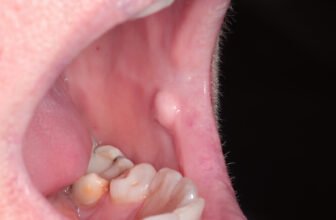What is Frenectomy? Its types, Indications, Cost and the Techniques?
Frenectomy is a medical term used for the procedure involving the surgical removal of the frenum present in the mouth.
What is a frenum?
Frenum (plural: frena) is a loose fold of connective tissue that attaches gum, underlying periosteum or alveolar mucosa to the lips, tongue or cheeks. There are mainly 3 types of frenum:-
- Labial frenum:- Labial frena is further of two types
- Superior labial frenum:- It attaches the upper lip to the gums of the maxilla.
- Inferior labial frenum:- It attaches the lower lip to the gums of the mandible.
- Lingual frenum:- It attaches the tongue to the floor of the oral cavity.
- Buccal frenum:- It attaches the gum to the inside of the cheeks.

When should Frenectomy be Done?
Not everyone needs to undergo a frenectomy, there are certain medical or dental conditions in which frenectomy is either only or the best available choice left in the hands of the clinician. Some of these conditions are:-
Feeding and Speech Difficulties
In children who are breast or bottle-fed (generally infants), along lingual frenum makes it difficult to feed the infant from a bottle. Such a condition is known as an ankylosed tongue, frequently referred to as a tongue-tie. This condition should never be left untreated as it may further, lead to difficulty in swallowing.
Orthodontic Complications
Another condition where frenectomy is relegated by a dentist is in the case of abnormal elongation of a labial frenum. If the frenum extends too far down near the gum line, it can interfere with interferer growth and spacing between the central incisors. This results in poor aesthetics. In such conditions, a frenectomy is a good choice to preserve the good strength and aesthetics of the individual.
Gingival Recession
An extended frenum exerts an excessive pull on the gum, which can create or aggravate gingiva recession. When the gum tissue is thinned around the teeth, a frenectomy can help control a receding gum problem.
Types of Frenectomy
Frenectomy are mainly of two types:-
Maxillary Frenectomy
In maxillary frenectomy, more commonly known as a labial frenectomy, the frenum connecting the upper gums to the upper cheeks are incised. Such a condition is known as lip-tie.
Lingual Frenectomy
It is more common than labial frenectomy. In this, lingual frenum that attaches the tongue to the floor of the mouth is incised.
How Much does Frenectomy Cost?
Frenectomies are performed by train oral surgeons. The average, fee for one tie excision is between $300- $350. Additional frenectomies range from $100-$150 as done in the case of tongue and both lip – ties.

Techniques of Frenectomy
Frenectomy can be conducted in two ways:-
Frenectomy Through Scalpel
This is the age-old method of tissue incision that has been from the early days. In this technique a narrow incision around, the frenal area is completed.
Advantages
- Less expensive
- Less time consuming
Disadvantages
- More painful
- Susceptible to infection
- This leads to scar formation
Frenectomy Through Lasers
Laser surgeries are recent advancements in medical sciences. These are more efficient and effective alternatives to conventional surgical methods.
Advantages
- Less bleeding
- Faster healing
- Less susceptible to infection
- Cause slight discomfort and pain.
Disadvantages
- Expensive
- Requires more precision
Conclusion
An elongated frenum poses a serious threat to the individual and can lead to difficulty in breathing as well swallowing along with speech. Thus, a frenectomy should be performed in childhood itself to avoid such complications.
References
Frenectomy: A Review with the Reports of Surgical Techniques. (2012, November 1). PubMed Central (PMC). https://www.ncbi.nlm.nih.gov/pmc/articles/PMC3527809/
Hughes, L., Musso, M., Lovvorn, M., Baxter, R., Agarwal, R., Emanuel, M., Baxter, D., Fabbie, P., Lahey, L. (2018). Tongue-Tied: How a Tiny String Under the Tongue Impacts Nursing, Speech, Feeding, and More. United States: Alabama Tongue-Tie Center.
Office-Based Maxillofacial Surgical Procedures: A Step-by-step Approach. (2019). Germany: Springer International Publishing.





